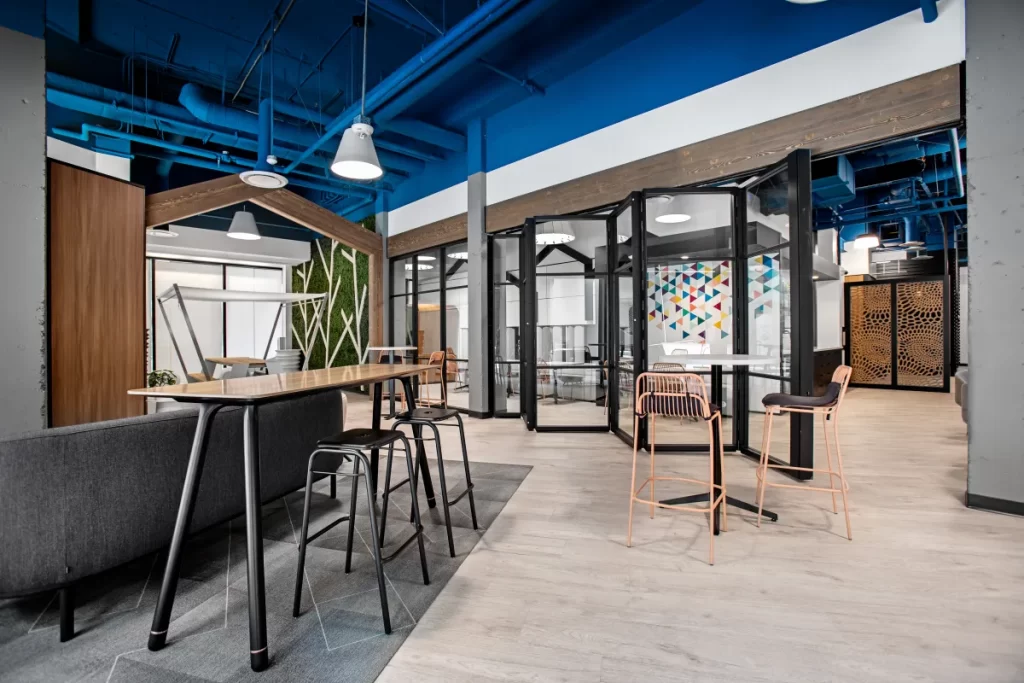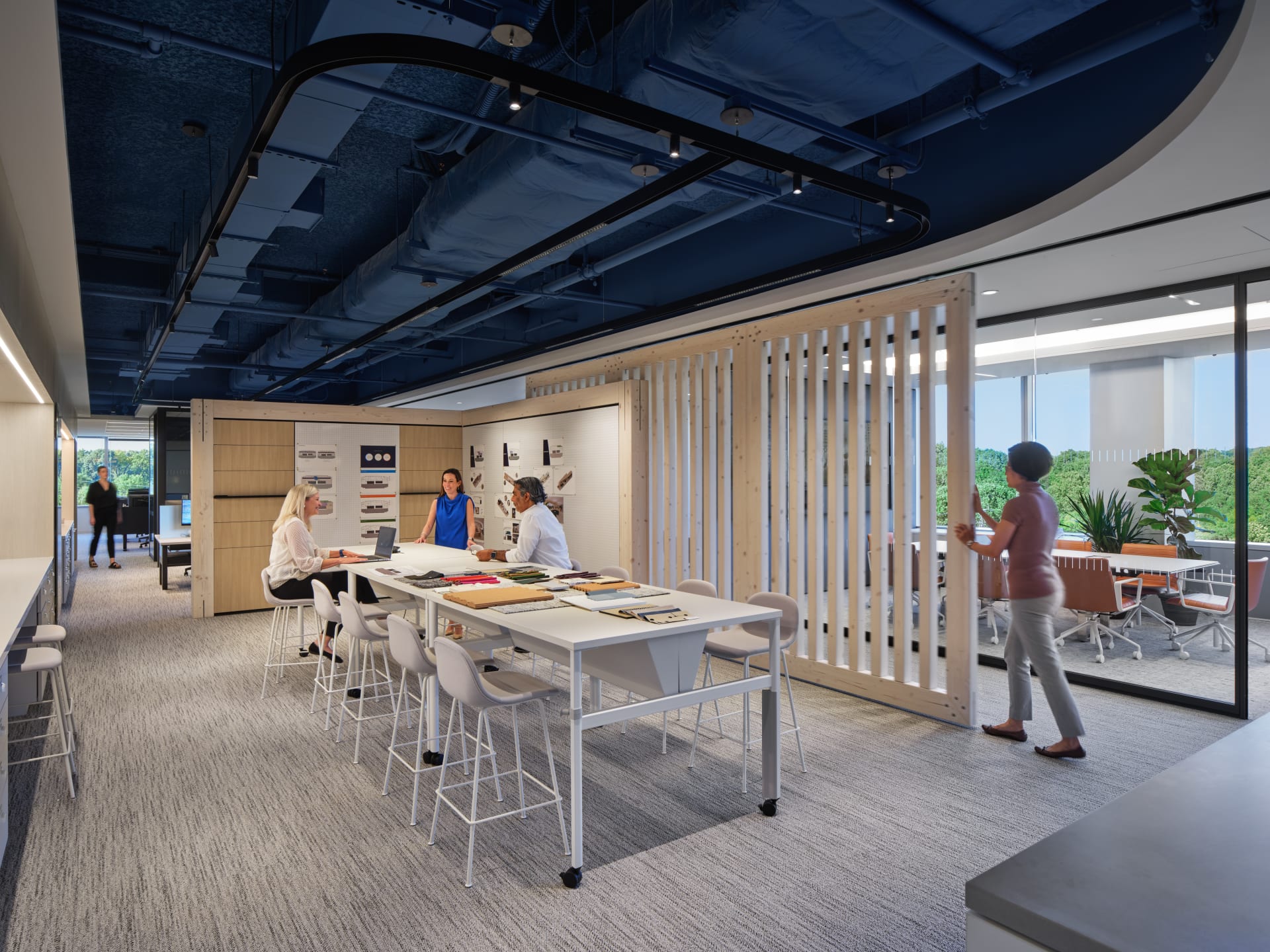Design cues and flexible, adaptable spaces can encourage positive user outcomes in office and educational environments.

Every designer wants to create a space that meets the needs of occupants. But some go one step further and try to design offices, educational facilities, and other public spaces in ways that inspire specific types of behavior.
Think of a classroom meant to foster creativity or a boardroom that promotes employee engagement.
This approach is called choice architecture.
Choice architecture is actually rooted in behavioral economics, specifically the 2008 book, Nudge: Improving Decisions About Health, Wealth, and Happiness. The title says it all — when applied to architecture, the design of a space is meant to “nudge” occupants in a certain direction.
“Design works well when it helps people imagine their own visions for themselves, as individuals or as groups, and then actualizes them,” explains Laurie Goodman, senior associate strategist at IA Interior Architects, a firm specializing in workspaces.
Ideally, Goodman adds, choice architecture creates “a generative environment—a platform for connection between groups, collaboration, community, belonging, and innovation.”
In workplaces and schools, choice architecture can encourage better work and study habits by fostering these generative environments.

To encourage generative environments, flexibility and adaptability are key
Choice architecture focuses on providing options that encourage and inspire occupants to do whatever activity they’re engaged in, well.
“Having spaces that are adaptable and flexible and suitable for lots of different uses with different groups is important,” says Goodman. “A self-organizing space empowers people.”
She uses her London office as an example, where movable walls are easily reconfigured and removable panels hide whiteboards for collaborative brainstorming.
Flexible spaces offer more freedom to facilitate water cooler chats — those spontaneous and creative encounters with colleagues.
“Self-organizing is not top-down,” Goodman explains further, noting that while teams and work expectations are defined by human resources, the reality of an employee’s work experience and their personal approach to completing tasks is not.
Essentially, someone’s workday might look very different than a company org chart or designated job description, and workplace design should enable workers to complete their work in the way that best suits them.

For instance, modular construction elements like folding walls (for solo creative projects that open up to bigger meeting spaces), or integrated technology (for easy access during presentations and remote call-ins) support both a variety of choices and spontaneous uses.
In an educational environment, choice architecture might be reflected in shorter hallways, which are proven to create more satisfaction and less crowding in student residences.
Or better wayfinding, demarcating a space with visuals like murals or graphic directions to establish a sense of place. In these cases, the desired outcome is to reduce stress for students living with others or navigating a new place.
Choice architecture involves more than just design though.
“I think you have to have a culture in place where people feel like they have ownership of the space, and they have the autonomy to move the environment to suit their needs.”
– LAURIE GOODMAN, SENIOR ASSOCIATE STRATEGIST, IA INTERIOR ARCHITECTS

Smart buildings can react to behavior in real time
Occupant data gathered from smart buildings can support the design of spaces that enable a generative environment.
As an example, Goodman and her team, “work with sensor data to understand how buildings are being used. And you can get it in real time, which for the client is very powerful. For instance, when people reserve spaces, it doesn’t always reflect actual use.” Sensors can track occupancy numbers, and to a certain extent, movement and activities.
But good old human observation is also important, she says.
Take tracking which desks in an office aren’t regularly used, for example. Observed insights can augment occupancy data, says Goodman.
To determine why certain desks aren’t occupied requires, “looking at different criteria to understand preferences and trends. Is it because the acoustics are bad? Or is it next to the CEO’s office and no one wants to use it?”
Getting to the bottom of questions like this can then inform how flexible spaces are adapted to better serve users.
Education spaces and workplaces that respond to data-driven occupant needs might be the perfect complement to choice architecture — optimizing positive behavior, and hopefully learning and work outcomes, by providing more freedom of choice.
“In design, we’re seeing a lot more emphasis on variety,” says Goodman. “Because then people feel like a design program is something that’s being done with them, and for them — not to them.”
